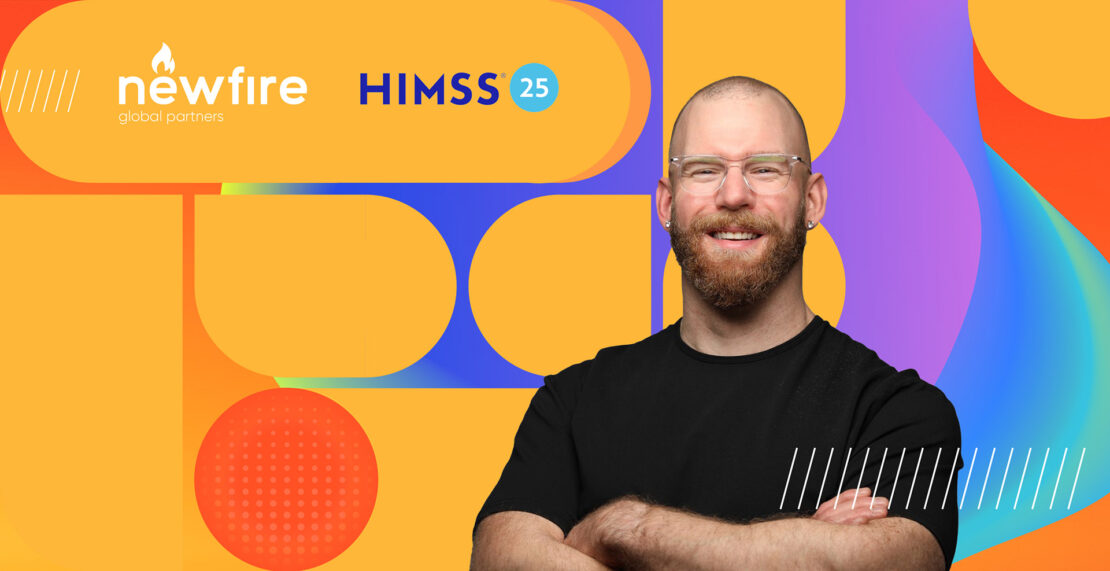HIMSS 2025: Brendan Iglehart on Interoperability, AI, and the Future of Healthcare Data

HIMSS 2025 brought together healthcare leaders, innovators, and policymakers to discuss the latest trends shaping the industry. While AI and digital transformation took center stage, one of the most critical discussions revolved around interoperability—how data flows between systems and what that means for the future of healthcare.
Brendan Iglehart, Staff Healthcare Architect at Newfire, attended the event and took a deep dive into these discussions. In this interview, he shares key takeaways on interoperability, AI-driven automation, and how healthcare organizations can navigate these challenges.
Q: Interoperability was a major focus of the sessions you attended. What were the key themes that stood out?
Brendan Iglehart: Interoperability remains one of the biggest challenges in healthcare. A lot of discussions centered around Qualified Health Information Networks (QHINs)—which are underpinned by the Trusted Exchange Framework and Common Agreement (TEFCA) and are aimed at improving healthcare data exchange. The goal is to expand interoperability to more organizations and use cases, including enabling patients to consent to data sharing with third-party apps, so that healthcare data can be maximally impactful.
Another major theme was the role of regulation. In the past, government policies have driven much of the progress in interoperability, but now there’s uncertainty about what comes next. During the conference, Steve Posnack, a longtime employee of the primary federal office that regulates EHRs and interoperability, was appointed as Acting Assistant Secretary of Technology Policy at the Department of Health and Human Services (HHS) to oversee these priorities, which added to the speculation. This appointment sends a signal of continuity, but the question remains: Will the momentum continue, or will regulatory priorities shift?
Q: What was this year’s big buzzword in your world?
BI: Without a doubt, QHINs. This is a hot topic in the interoperability space because it represents the next phase of healthcare data exchange. AI and automation are also big talking points, but at the end of the day, all of these innovations rely on data. If organizations can’t move data efficiently, AI applications won’t reach their full potential.
Another trend gaining traction is robotic process automation (RPA)—using bots to interact with electronic health records (EHRs) like a human would. Traditionally, healthcare data exchange with individual EHR instances happens through routes such as HL7v2 or various APIs including FHIR, but not every field in an EHR is accessible via these methods. RPA provides a workaround by allowing bots to extract and input data just like a user would, which could help overcome some of the biggest interoperability roadblocks.

Q: How do these interoperability trends impact AI and automation in healthcare?
BI: AI depends on access to high-quality data. A lot of healthcare innovations sound great on paper, but in reality, companies struggle to implement them because they can’t access the necessary data.
There’s also an ongoing challenge of data rights and risk management. Contrary to popular belief, it’s not terribly difficult to set up a feed of data out of an EHR; many of the barriers preventing data exchange aren’t inherently technical—they’re regulatory and legal. However, healthcare organizations are hesitant to share data due to privacy concerns, liability risks, and inconsistent policies. After all—the AI doesn’t have to testify in the lawsuit.
Over the next few years, we’ll likely continue to see more efforts to streamline data sharing and governance, so AI tools can be deployed in meaningful ways.
Q: For the average person, how will these changes affect their healthcare experience?
BI: The biggest shift patients will notice is a reduction in bureaucracy. Right now, a lot of healthcare processes involve redundant paperwork, consent forms, and manual data entry. As interoperability improves, patients should be able to share their medical records and data across providers and apps more easily, reducing administrative headaches.
We’re also seeing a growing push for automation in hospitals and clinics. AI-driven tools will take over more administrative tasks, allowing doctors and nurses to focus on patient care. Over time, this should lead to faster, more efficient healthcare experiences. As someone who gets no joy from filling out my allergies and medications on a clipboard, I’m excited for this!
Q: What’s your hot take on HIMSS 2025?
BI: There’s been a lot of talk about other healthcare conferences like ViVE and HLTH eating into HIMSS’ relevance for health systems, but I don’t see that happening yet. HIMSS is still the health-tech event—it’s massive, with 25,000+ attendees.
That said, the event could be run better. Other conferences offer a more polished experience, but HIMSS remains the go-to place for serious discussions about real-world healthcare challenges. Unlike some events that feel like hype machines, HIMSS has deeper conversations on topics like interoperability and regulation. That’s something I appreciate.
Q: Any key takeaways for Newfire’s clients and partners?
BI: Absolutely. Healthcare organizations and vendors are under increasing pressure to innovate while managing costs. Our role at Newfire is to help them navigate these challenges—whether it’s improving interoperability, implementing AI-driven automation, or developing scalable solutions that actually work in real-world healthcare settings.
We’re already helping some clients optimize their data exchange and workflow automation. The key moving forward will be making healthcare companies more agile so they can adapt to shifting regulations, emerging AI applications, and growing patient expectations.
Interoperability Is the Missing Link in Healthcare Innovation
Despite rapid advancements in AI and automation, healthcare still struggles with fragmented systems and data bottlenecks. True innovation will come from organizations that solve these challenges—enabling seamless data exchange, reducing administrative friction, and unlocking the full potential of digital health tools.
At Newfire, we help healthcare companies turn interoperability from a roadblock into an asset. Whether you need seamless data exchange, AI-powered automation, or scalable digital health solutions, we’re ready to help. Let’s build what’s next.